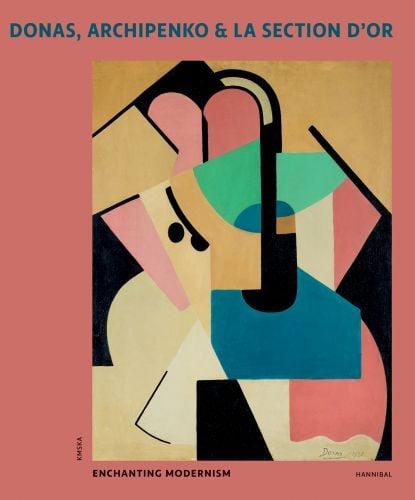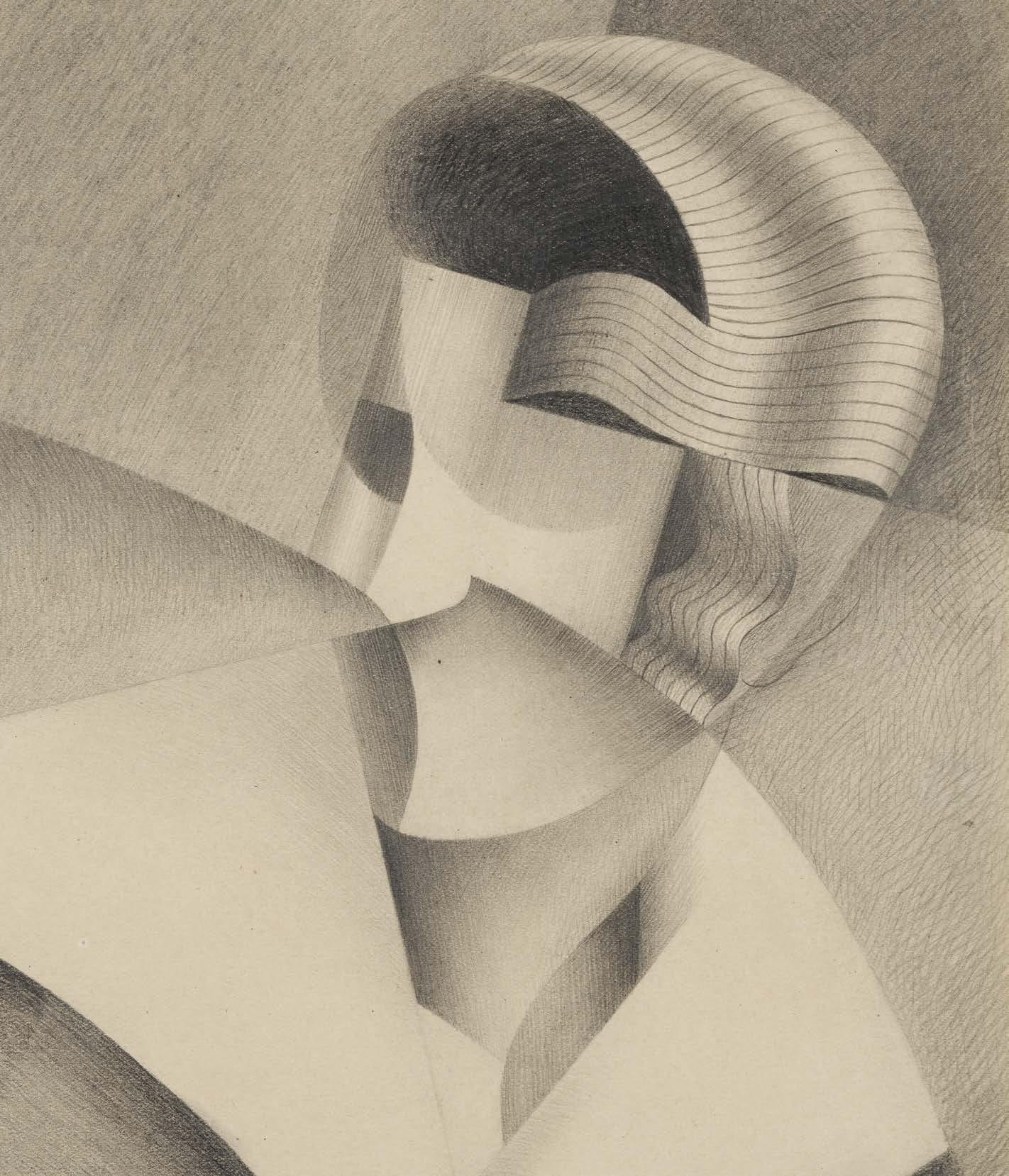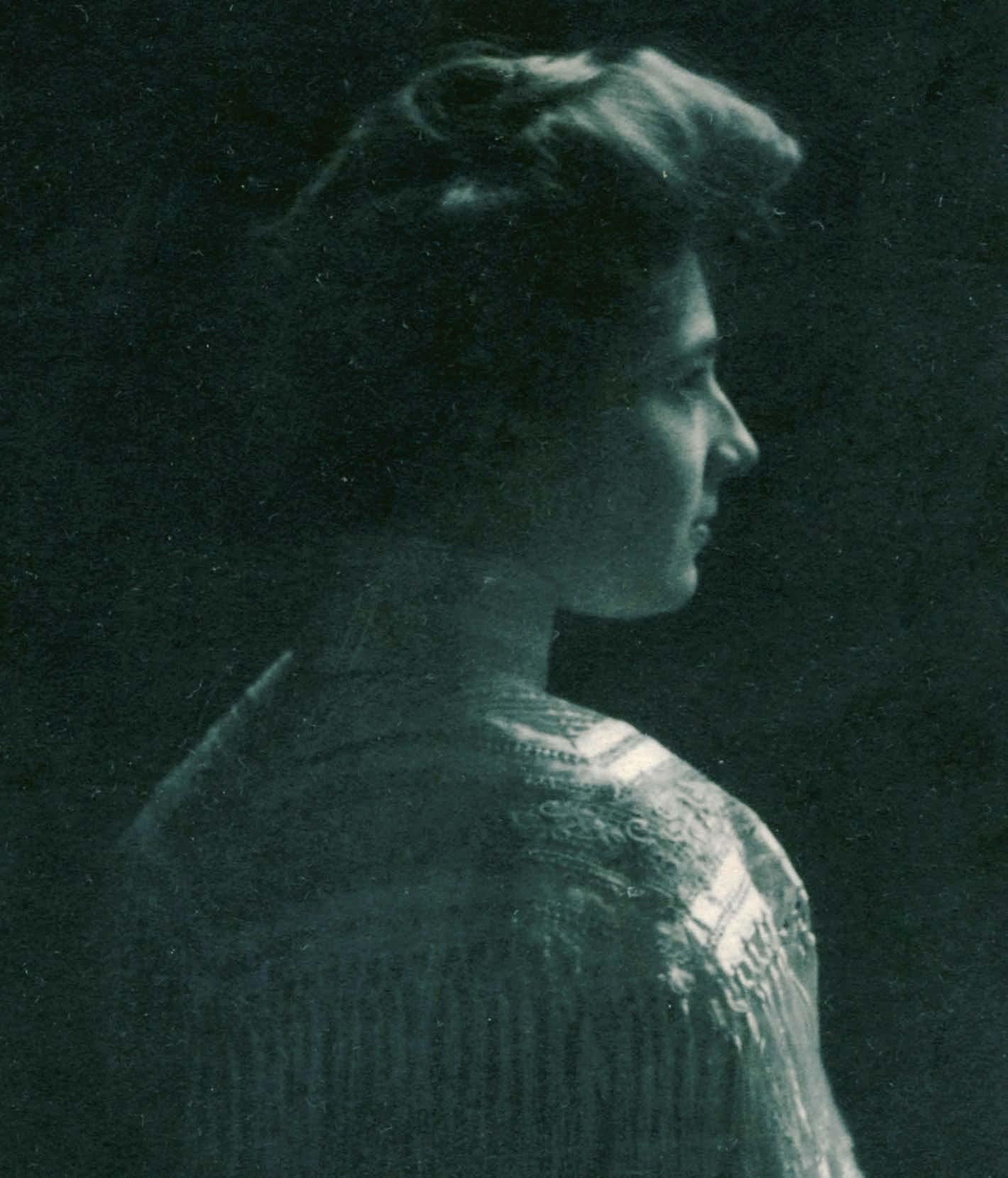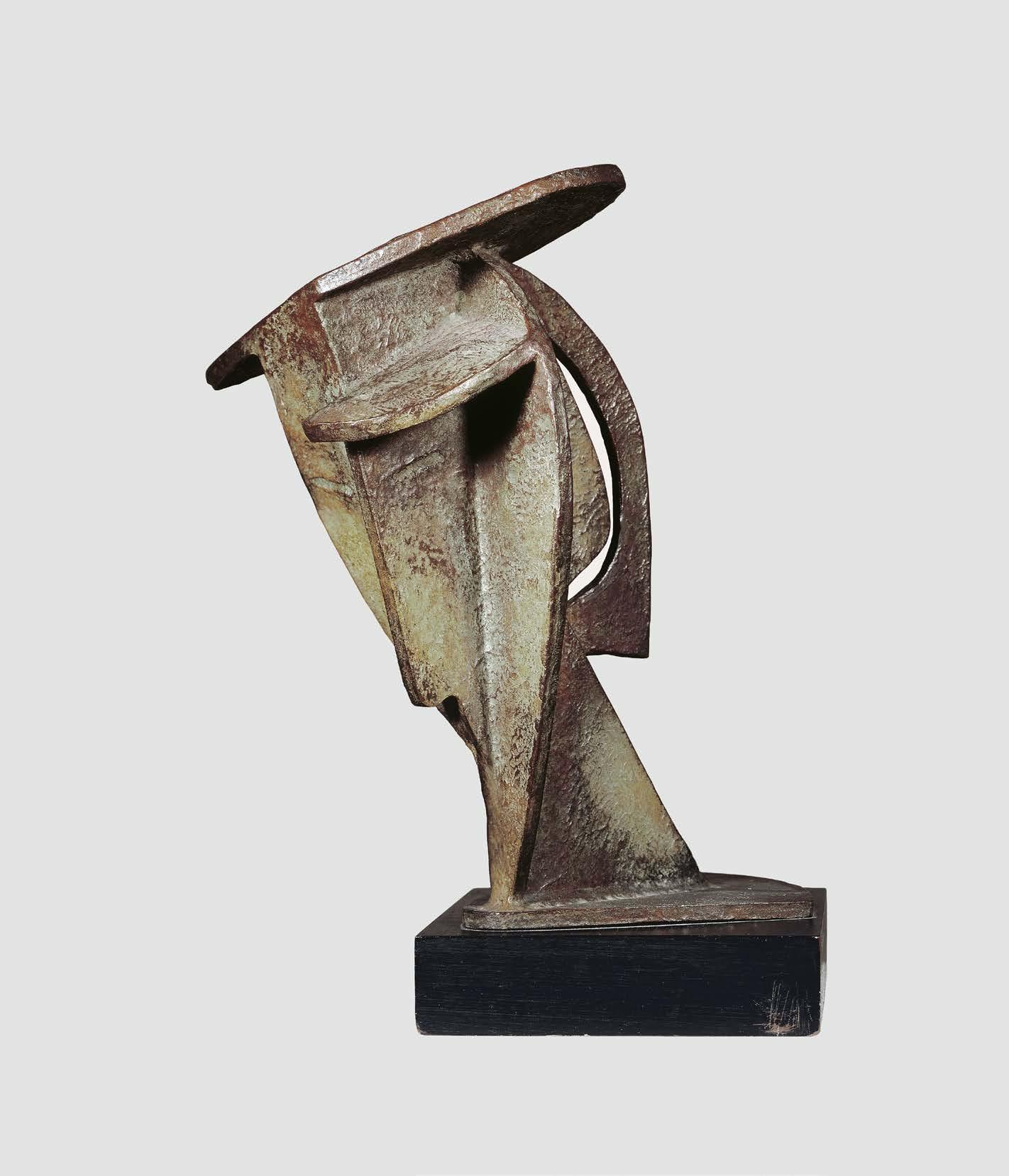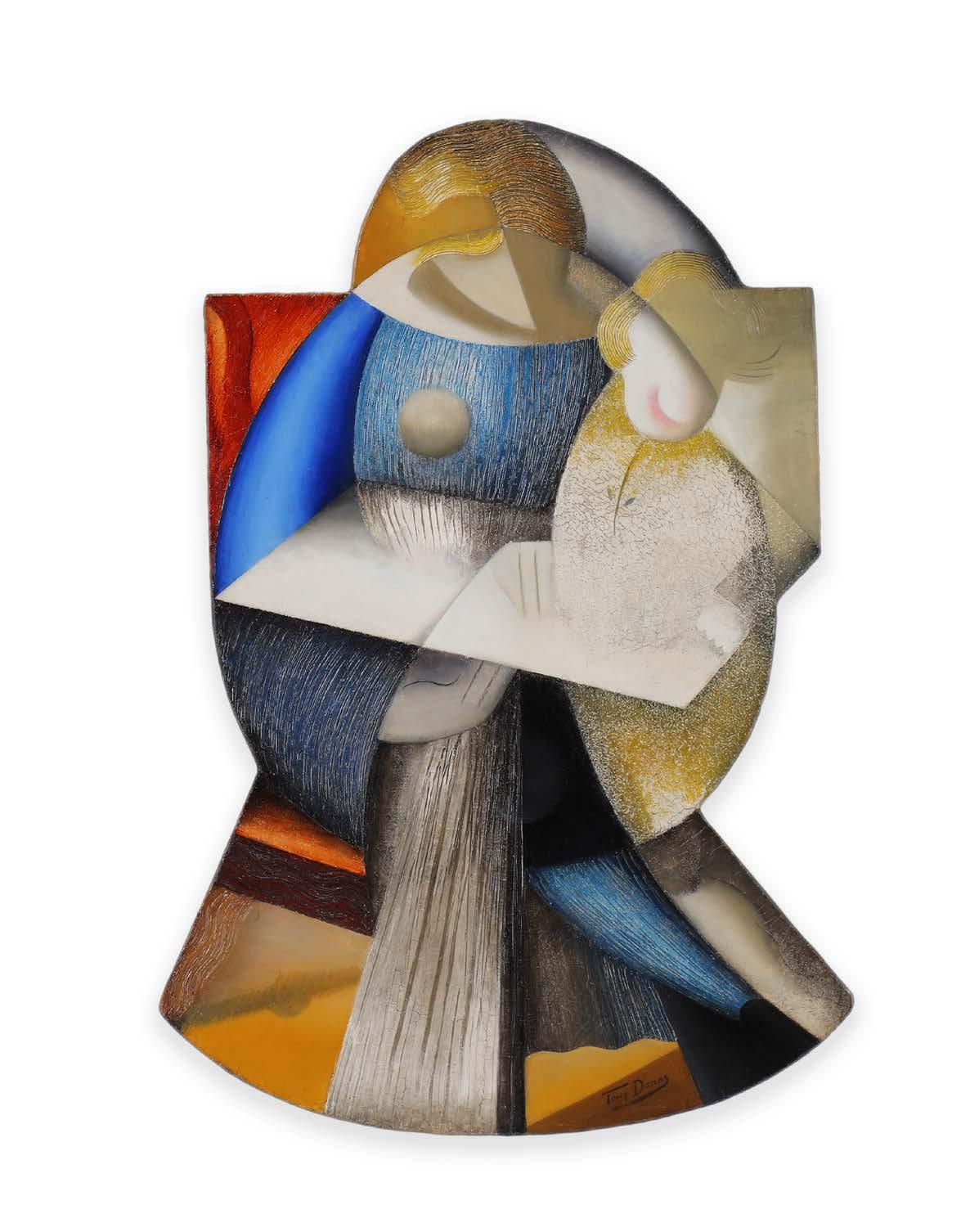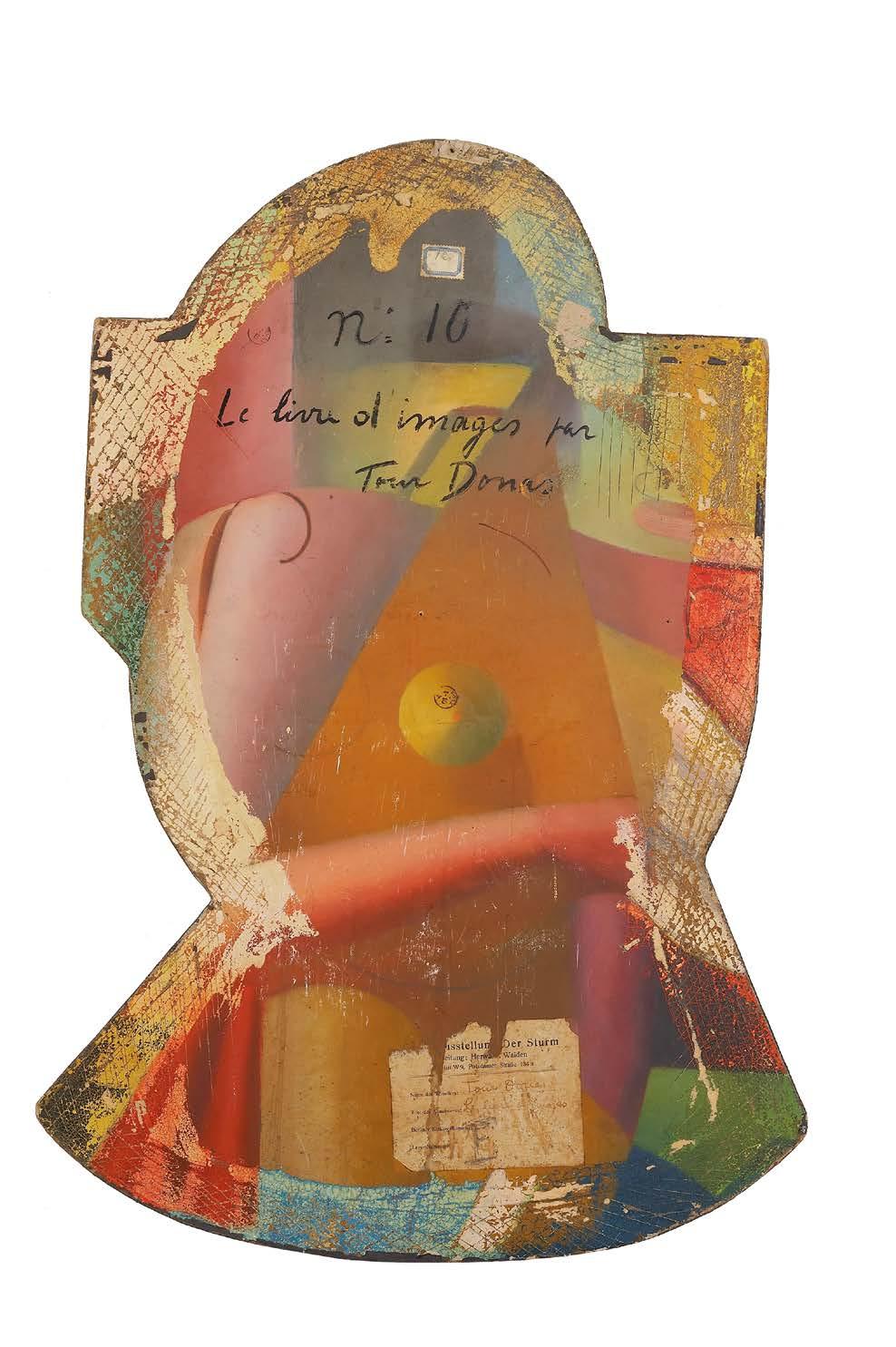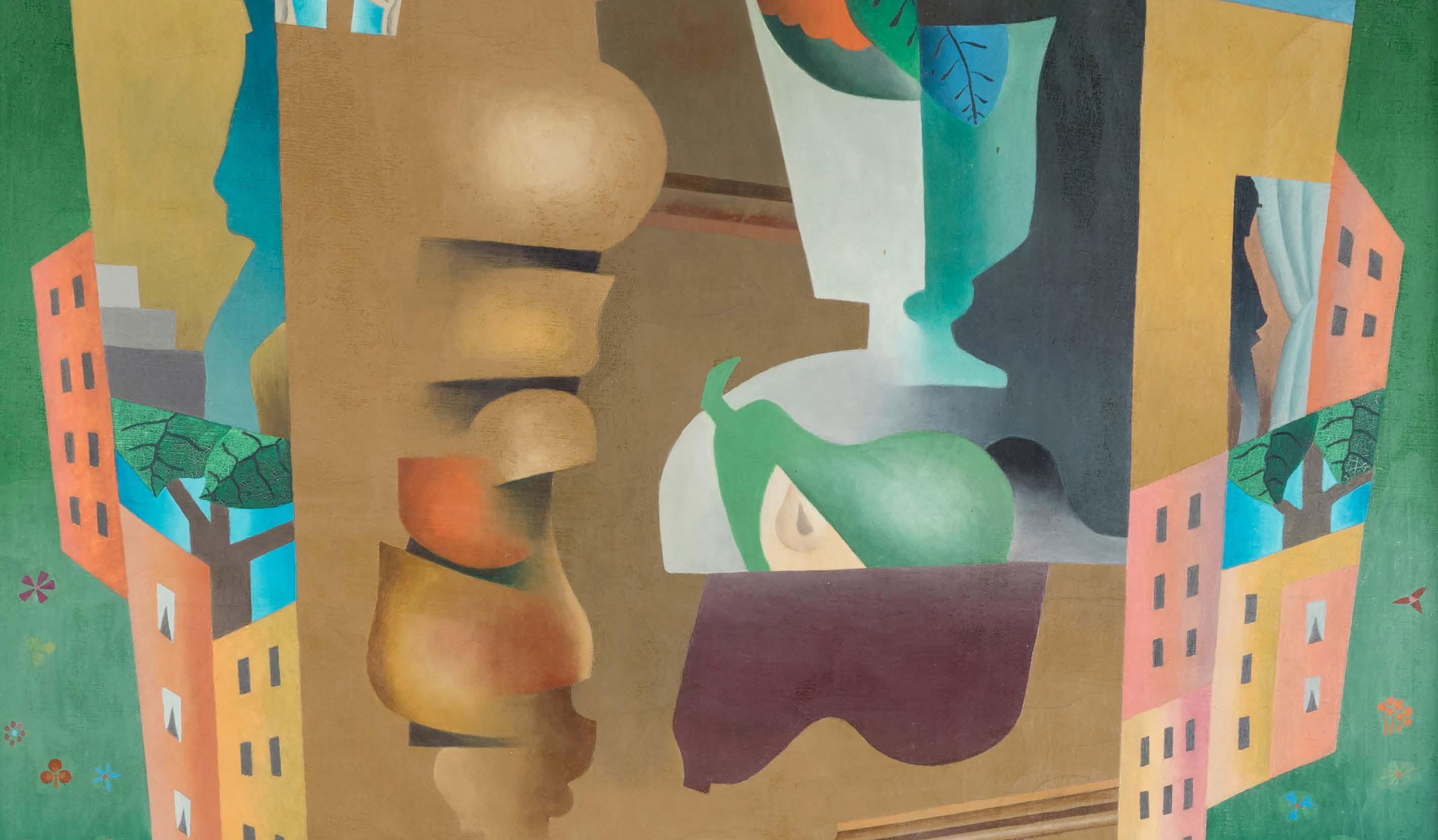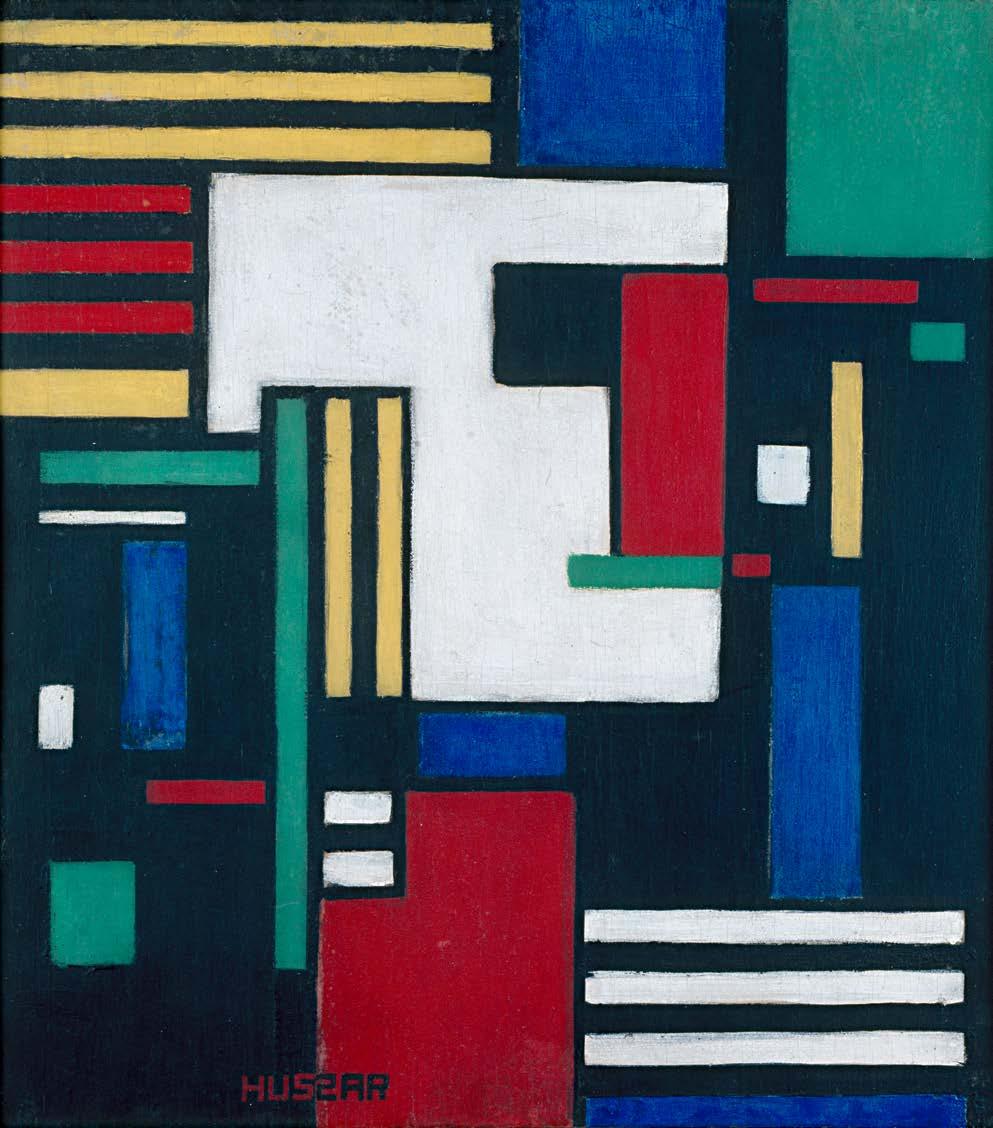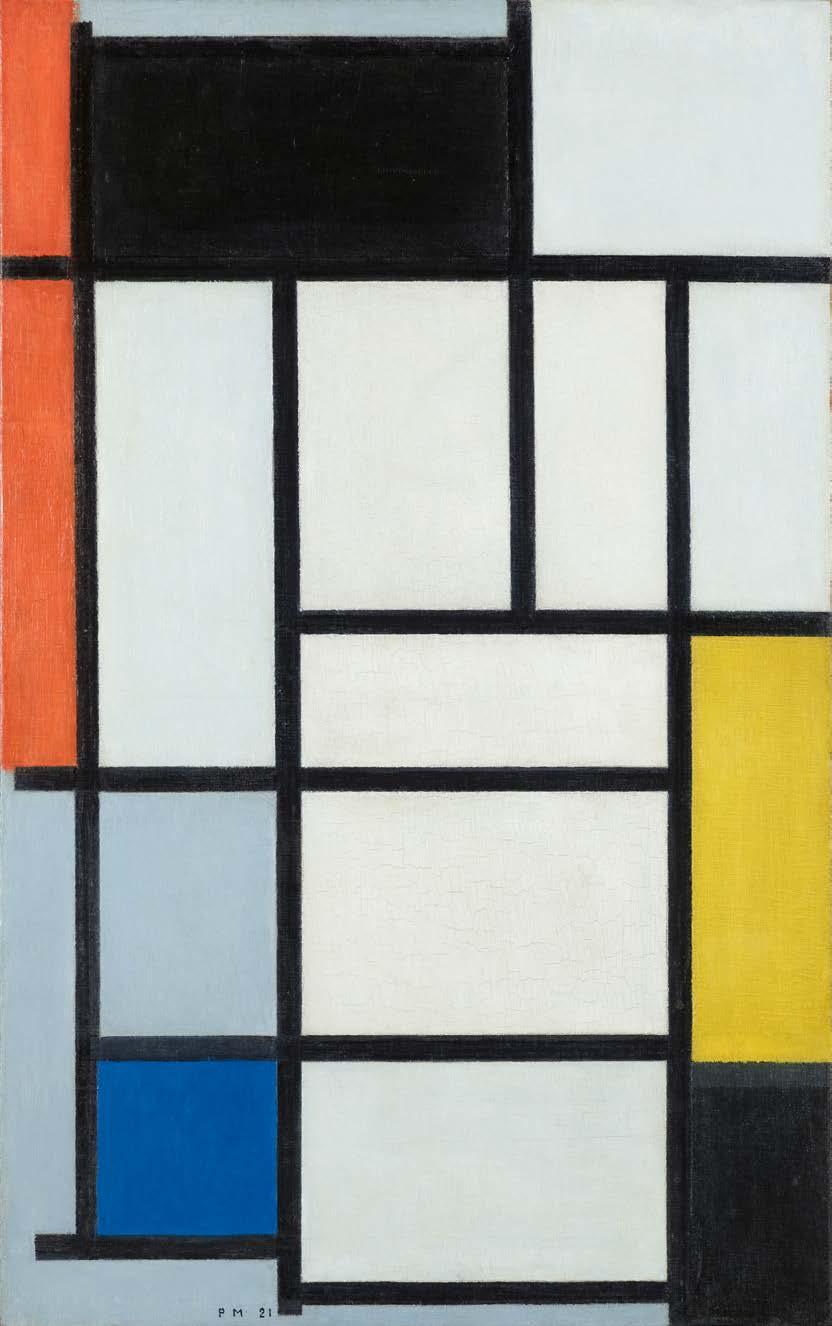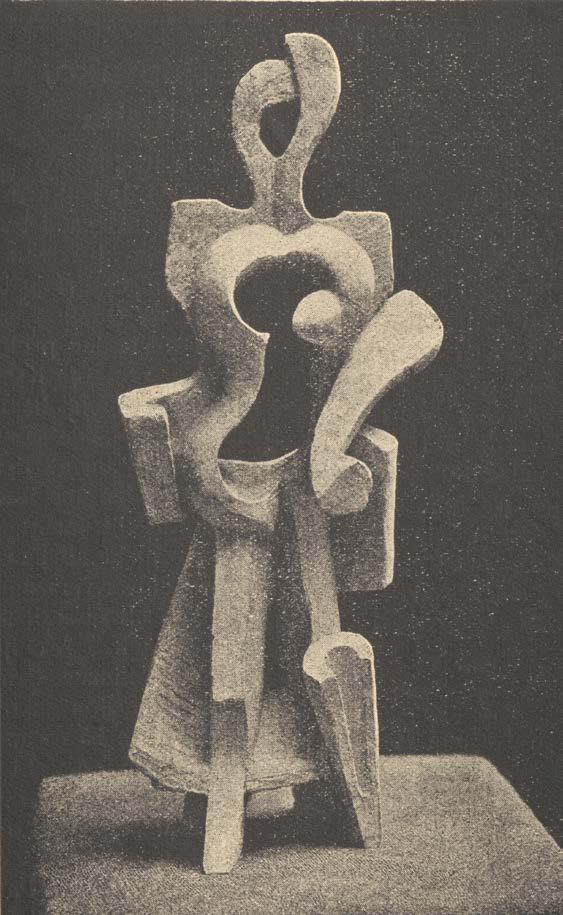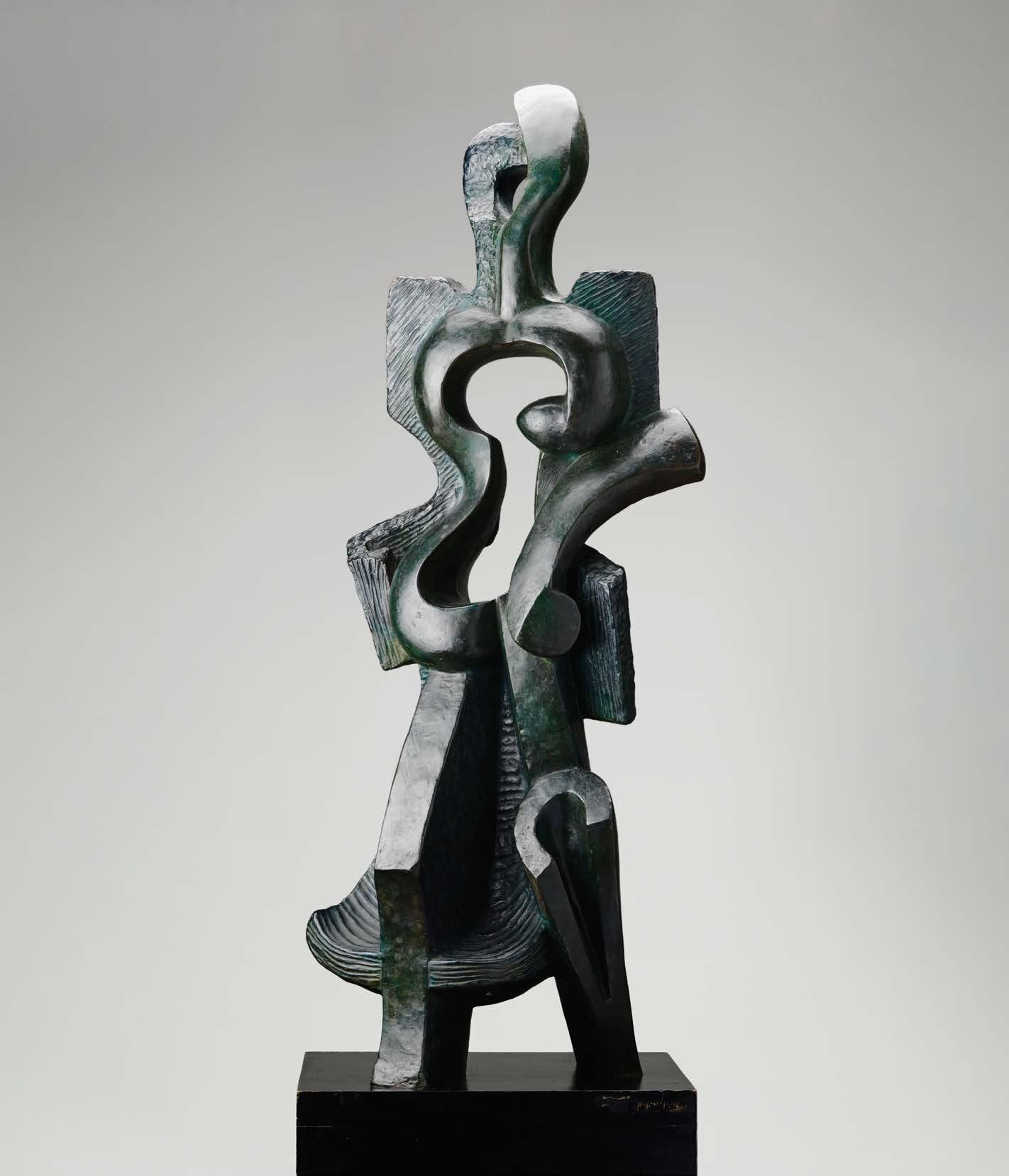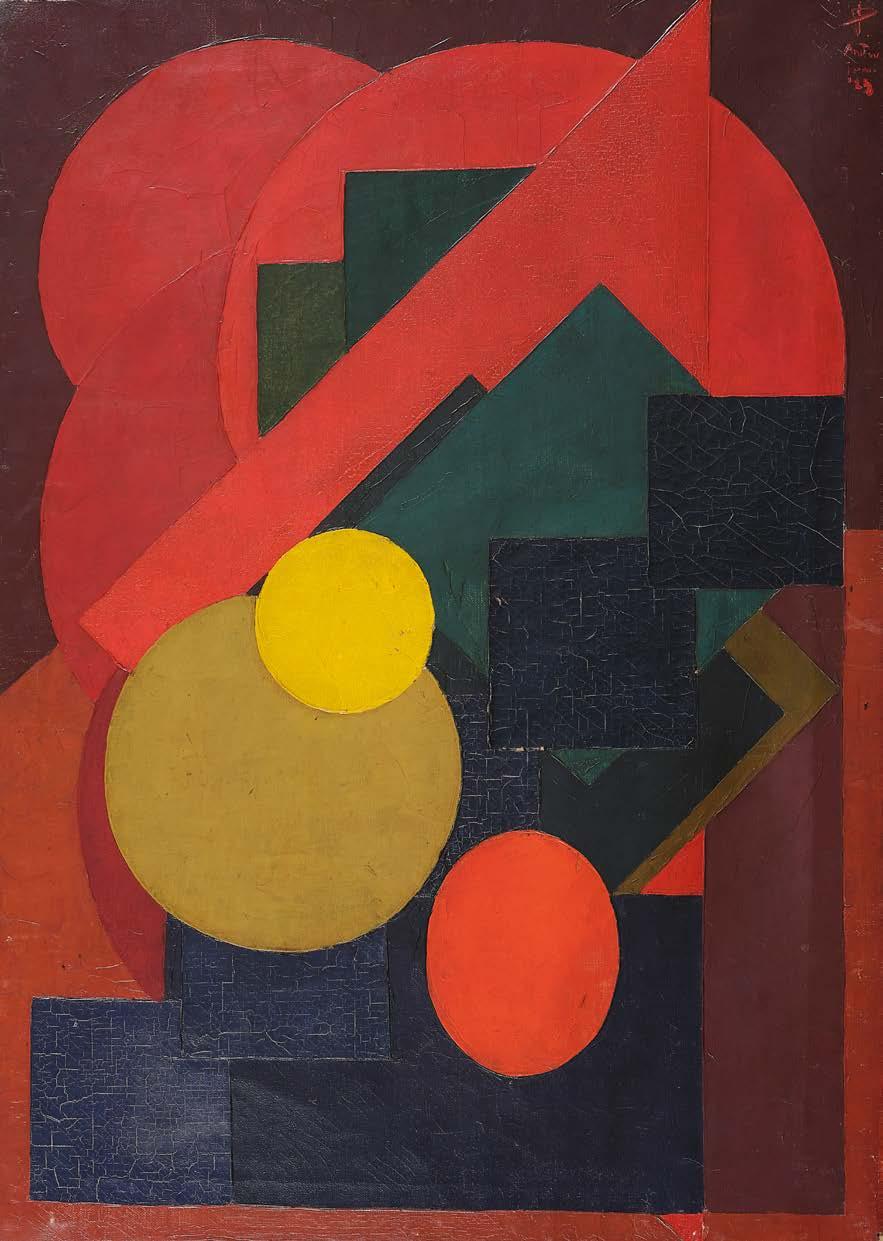6
forewor d
C!rmen Willems & Luk Lemmens
8 e nchanting mo d ernis m
Adri!!n Gonnissen & Peter J.H. P!uwels
1900–1917
12 t he :eginnings o f an a rtist
M!rcel D!loze
28 a. exan d er a rchipen,o’s a rtistic id entity an d p ractice
Alex!ndr! Keiser
52 m ontparnasse artists in nice du ring the f irst wor .d war
Kenneth W!yne
1917–1920
64 a rchipen,o an d donas : a r e d iscovere d a rtist c o u p . e
Peter J.H. P!uwels & Adri!!n Gonnissen
92 anarchic . iaisons . archipen,o ’ s co u p . ing
o f f ig u re , pict u re , space an d the voi d
K!thrin Elvers-Šv!mberk
116 a n a m e . i,e c hain mai . : the p se ud onym s o f marthe donas
Ch!rlotte Green!w!y
1(4 marthe ‘ to u r’ donas : pioneer o f m o d ern shape d painting
Adri!!n Gonnissen
152 .i : rairie ,u n d ig 1919 : a rchipen,o an d donas in g eneva
Peter J.H. P!uwels
1)0 an antwerp artist at d er st u r m
Peter J.H. P!uwels
1920
196 . a section d’ or d e paris : u nity in d is u nity
Fr!nçoise Lucbert
2(6 ‘de s tiA . an d .a s ection d ’ o r have nothing to d o with each other’ t heo van does :u rg an d .a s ection d ’ o r
Sjoerd v!n F!!ssen
260 .a s ection d ’ o r in :e . gi um
Peter J.H. P!uwels
1920–192B
2)6 the en d o f a r e . ationship
Peter J.H. P!uwels & Adri!!n Gonnissen
(02 :e . gian a rtists an d me m: ers o f .a s ection d ’ o r at the e xposition i nternationa . e d ’a rt mo d erne in g eneva
Peter J.H. P!uwels
(24 w o m en in a rchipen,o’s .i f e an d w or, Vit! Sus!k
(44 a : o u t the a u thors
(46 i n d ex o f n a m es
THE BEGINNINGS OF AN ARTIST
Ma rce l D al oze
a ntwerp : . earning u n d er constraint
M ! rthe Don ! s ! nd her twin sister Livine were born on (6& October #%%5 into ! French-spe!king bourgeois f!mily in Antwerp. Her f!ther, Rom!in, w!s ! dried-fruit importer !nd wholes!ler.¹ In #%9), he !nd his wife Julienne Isenb! ert moved their five children into ! l!rge Neocl!ssic!l house designed by the ! rchitect Edmond V! n W! eterschoodt on Rembr!ndtstr!!t, st !ffed by ! subst !nti!l number of serv!nts.
M !rthe beg!n to dr!w !t ! very young ! ge, ! t !lent she might h!ve inherited from her mother’s f!ther, Florent Isenb! ert, who p!inted m!rine scenes !nd l!ndsc!pes !nd exhibited !t v!rious s!lons. When she w!s four ye!rs old, her prim!ry school te! cher Anne De Keyser (niece of the celebr!ted p!inter Nic!ise de Keyser, director of the Roy!l Ac! demy of Fine Arts in Antwerp), predicted ! gre!t !rtistic future for her, providing nothing stood in her w!y.² It w!s in th!t s!me ye!r of #%%9 th!t the ! c! demy ! dmitted its first fem!le students.³ At the ! ge of fi+ een, Don!s took lessons every Thursd!y !+ ernoon !t ! priv!te dr!wing school for middle-cl!ss girls, run by M !rie Coveliers-v!n Meir.⁴ Ple!s!nt !s this hobby w!s, however, she w!nted more, !nd two ye!rs l!ter decided to enrol !t the Antwerp ! c! demy for ! ye!r. Her first flower still lifes d!te from this period, testifying to ! precocious t !lent (V!se With C!rn!tions, #9)(; p. #.).
All the s!me, Don!s’s first !rtistic steps were !nything but smooth. From the outset, there w!s ! cl!sh with her overprotective f!ther, who fiercely opposed her enrolling !t the !c!demy !nd eventu!lly forced her to withdr!w. As the !rtist l!ter rec!lled in her notebooks, he went so f!r !s to prevent her from !ttending exhibitions.⁵ Rom!in Don!s dis!pproved of his d!ughter’s exposure to the bohemi!n world of the !c!demy, with its nude models !nd permissive !ttitudes. He w!s prep!red to toler!te flower p!intings, l!ndsc!pes or portr!its of f!mily friends (Portr!it of ! Little Girl, #9).), so long !s she worked !t home – in the !ttic, in f!ct. But this genteel p!stime did not !ppe!l to the teen!ge M!rthe, who preferred less convention!l subjects (The Drinker, #9).). Around #9)5, Don!s beg!n t !king lessons with the l!ndsc!pe !nd portr!it p!inter Ch!rles Mertens (#%65–#9#9), one of the founders of the !rtists’ society L’Art contempor!in/Kunst v!n Heden.⁶ But Rom!in put !n end to this !s well. Feeling isol!ted within the f!mily !nd judging her f!ther’s beh!viour to be entirely in!ppropri!te, M!rthe r!n !w!y from home to pursue her p!ssion, but to no !v!il.⁷ The work she produced during this period reflects her struggle to esc!pe the constr!ints of f!mily life: self-portr!its, portr!its of f!mily members (including her older sister L!ure) !nd friends, serv!nts, flower p!intings !nd l!ndsc!pes – !ll convention!l in style.⁸ It w!s not until ten ye!rs !+er Don!s’s first experience !t the !c!demy th!t she enrolled !g!in, h!ving broken off her eng!gement !nd begun to st!nd up to her f!ther. This time, she prev!iled in the tug-of-w!r, determined to persevere ‘!g!inst !ll odds’.⁹ A settled bourgeois life w!s not for her: M!rthe w!nted to steer cle!r of the ‘well-trodden p!th’.¹:
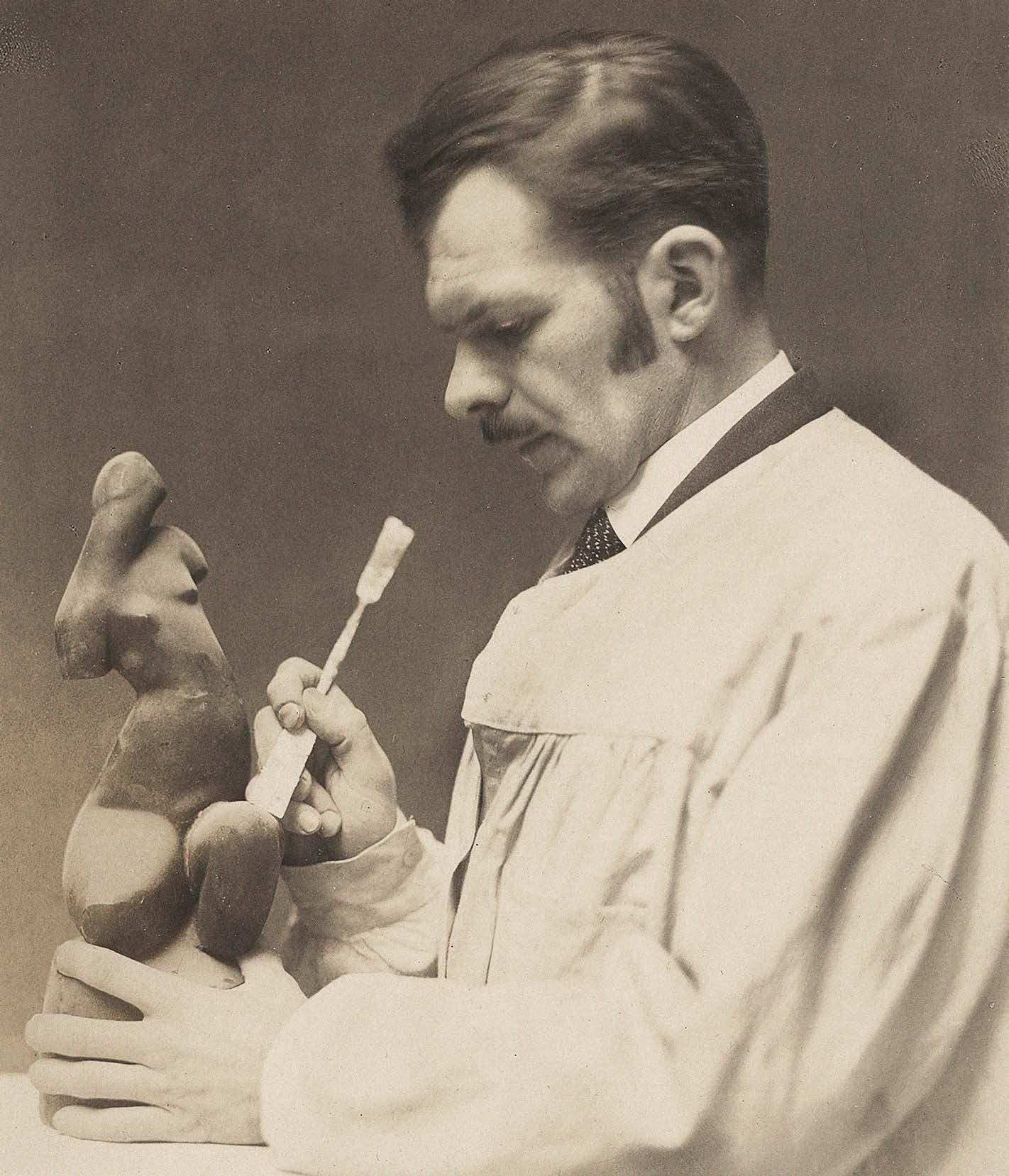

ALEXANDER ARCHIPENKO’S ARTISTIC IDENTITY AND PRACTICE
A l ex a ndra Keiser
‘Inventer! Existe-t-il quelque chose de plus import!nt? A l! vérité, je ne crois p!s. Dès mon enf!nce, je l’!i compris. Et qu!nd, ) vingt et un !ns, j’!rrive ) P!ris, tout me confirme d!ns cette opinion.’¹ Alex!nder Archipenko
In my previous role !s rese!rch cur!tor !t the Archipenko Found!tion, I h!d the privilege of rese!rching Alex!nder Archipenko’s life !nd work for over () ye!rs !nd contributing deeply to the building !nd editing of his sculpture c!t!logue r!isonné. It is !n honour to write !nd sh!re my rese!rch for this long-envisioned exhibition c!t!logue, dedic!ted to Archipenko !nd the p!inter M!rthe Don!s.²
They met in the south of Fr!nce in #9#=. Archipenko supported Don!s’s !rt m!king, considered her his ‘best student’, !nd promoted her p!intings for exhibitions. During my rese!rch, I w!s f!scin!ted by sever!l qu!lities of Archipenko’s cre!tive pr!ctice, beyond his !rt. These include his consistent !nd strong support of his students !nd signific!nt others, his self-identific!tion !s !n !rtist-inventor, his lifelong interest in philosophy, science !nd n!ture, !s well !s his discipline !nd flexibility in m!int !ining ! tr!ns!tl!ntic pr!ctice !nd st!ying connected with diverse members of !n intern!tion!l network of modern !rt.
There !re still m!ny un!nswered questions !bout his life !nd work. This ess!y !ddresses the beginning of his !rt m!king !nd the process of becoming ‘Archipenko’.
A go!l is to illustr!te !rtworks th!t were !ctu!lly m!de during the ye!rs #9)6–#5, fr!ming the time period during which the !rtist beg!n producing !rt in Ukr!ine, worked in P!ris, !nd then beg!n spending time in the south of Fr!nce. M!ny of these works h!ve been lost or destroyed, !nd Archipenko l!ter recre!ted them in different versions or m!teri!ls. Yet, to contribute to the existing Archipenko n!rr!tive, it is import !nt to show im!ges of the works in their origin!l form, from the beginning. This step w!s f!cilit!ted by the !rtist’s own interest in photogr!phy, !s he !nnot!ted !nd edited im!ges of his work, preserving them in his !rchives.
fro m , yiv to paris : origins o f a rchipen,o’s creative practice
A lifelong drive for invention !nd innov!tion c!n be found !t the core of Archipenko’s !rt m!king !nd pr!ctice. Describing himself !s !n !rtist-inventor, Archipenko embr!ced modernity !nd the innov!tions of the twentieth century. Not!bly, the !rtist’s quest for innov!tion w!s first developed in P!ris in ! cosmopolit!n milieu³ th!t fostered renew!l in the !rts. The !rtist’s reloc!tion from his hometown Kyiv, vi! Moscow !nd Berlin, to P!ris pl!ced Archipenko’s se!rch for innov!tion !nd his !rtistic developments in the midst of new !rt.⁴ Benefiting from the fluid exch!nge of ide!s !nd cultur!l references !mong ! diverse group of !rtists, Archipenko beg!n to develop his idiosyncr!tic sculptur!l l!ngu!ge by infusing it with references to his E!stern Europe!n cultur!l herit !ge, !s well !s to the contempor!neous experiences he w!s !ttuned to.


in the meticulous pencil dr!wings M!rthe Don!s produced in #9#= (pp. %=, %9) !nd even more so in the form!l structures of her p!inted Abstr!ct Compositions from #9() onw!rds (pp.&(9(–(9.), in which she pushed the schem!tis!tion of the body even further th!n her te!cher. In Archipenko’s sculpture, the b!rest possible !rticul!tion of the he!d’s v!rious !spects is combined with !n !rchitectonic tre!tment of the object. As the viewer circles the sculpture, seemingly fixed front!l !nd profile views shi+ !nd overl!p in ! rhythmic!lly surprising w!y, further intensifying the work’s expression of structur!l, sp!ti!l !nd sem!ntic !mbiguity. By !ccentu!ting this sequenti!l experience of the work, the !rtist emph!sised the ide! th!t the sp!ce of sculpture must !lw!ys be understood in vit!l rel!tion to the viewer-subject’s sp!ti!l fr!me of reference.
From #9#5 onw!rds, Archipenko incre!singly experimented with the integr!tion of mirror effects in his pictori!l works. The tr!dition!l theme of Wom!n in Front of Mirror – !n especi!lly popul!r subject in French p!inting – lent itself to the gener!tion of visu!l p!r!doxes in terms of subject-object, physic!l presence, m!teri!l intensity, !nd the sp!ti!l loc!tion of the depicted elements. Representing mirror im!ges h!s !lw!ys been ! me!ns of bre!king free from hier!rchic!l composition!l structures, in th!t the visu!l world of its subjects (including the viewer) !ppe!rs p!rti!lly det!ched, ! reflection of ! different re!lity. In the spect!cul!r ‘sculpto-p!intings’ th!t Archipenko developed during his ye!rs in Nice, reflective surf!ces bec!me ! key component of his str!tegy to cre!te new re!lities !nd gener!te !mbiv!lent, disorienting sp!ti!l configur!tions. These compositions typic!lly centre on ! mech!nised (nude) fem!le figure. The sculpto-p!intings were preceded by works in which he used h!nd-modelled sculptures !s supports for subtle p!interly compositions, !s in B!ther, #9#5 (p. #)#). Archipenko’s go!l w!s to cre!te !n !rtwork th!t !llowed ! new kind of inter!ction between the sculpture’s objective physic!lity !nd the illusionistic sp!ti!l projections of ! p!inted pictori!l world. In so doing, he conferred new prominence !nd !utonomy on the formerly p!ssive support, while !llowing the (Cubist-inflected) p!inting to free itself from the confines of the picture pl!ne !nd, dr!wing on its own me!ns !nd effects, to exp!nd into unch!rted territory. Illusionistic, p!interly modelling either reinforced or contr!dicted the sculpture’s re!l intern!l sh!dows, while the work’s surf!ces !nd contours inter!cted !nd competed with
the silhouettes of the p!inted figure segments. The result w!s !n !n!rchic li!ison th!t cre!ted fresh scope in which to interpret the rel!tionship between body !nd sp!ce, colour !nd volume, re!lity !nd illusion, !nd reenergised the dyn!mic between !rtwork !nd viewer.
Eng! ging with Archipenko’s sculpto-p!intings, in which he pursued !n incre!singly multil!yered !nd complex fusion of p!inting !nd sculpture, presents the viewer with !n even gre!ter ch!llenge. Like p!intings, these reliefs !re hung on the w!ll, !nd while the subject m!tter is entirely tr!dition!l – in m!ny c!ses interiors fe!turing women b!thing or looking in mirrors – Archipenko’s form!l !ppro!ch broke entirely new ground. Coloured wooden elements, p!piermCché, met!l sheets !nd found m!teri!ls !re mounted on ! p!inted support !nd se!mlessly integr!ted into the pictori!l n!rr!tive. The picture pl!ne !ssumes ! new role, !s !utonomous sculptur!l structures emerge from it, while the figur!l tre!tment r!nges from dry !nd construction!l to fluid !nd eleg!nt. A strongly coloured !nd finely modelled finish ch!r!cterises !ll the components of these multiperspectiv!l scen!rios, the boldly structured support !nd the meticulously formed, !pplied elements !like. Illusionistic p!interly effects !nd re!l relief structures combine in w!ys th!t !re not only liter!lly multil!yered !nd dyn!mic!lly ch!rged but !lso – depending on the lighting – const!ntly ch!nging. Archipenko invites the viewer to cross the supposed bound!ries between two- !nd three-dimension!lity.⁵
The monument !l !nd highly !bstr!ct Two Women (p. %6) of #9() shows ! cle!r tendency tow!rd reduction !nd form!l tightening in Archipenko’s sculpto-p!inting. The two fem!le figures !re rendered in relief from bent met!l !nd wood, their bodies constructed from simplified, geometric elements. Colour surf!ces !nd sculptur!l form interlock to produce !n !ltern!tion of convex !nd conc!ve sh!pes, !nd ! shi+ing between front!l !nd profile views. The monochrome support !nd the shimmering texture of the met !l sheet intensify the brilli!nce of the colour scheme. The bright, hourgl!ss-sh!ped intern!l p!inting of the figure on the right possibly !lludes to the e!rly omission of form in the torso of W!lking of #9#( ⁶
‘Après moi viendront des jours quand cette œuvre guidera et les artistes sculpteront l’esp ace et le temps.’
